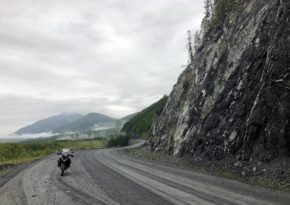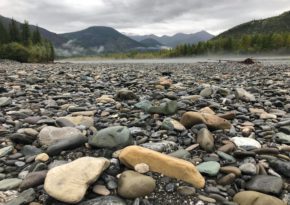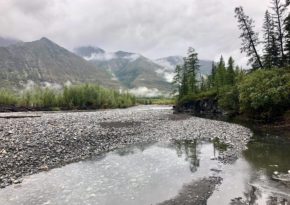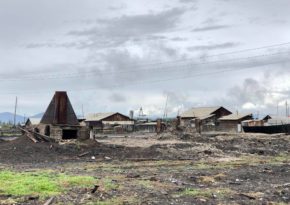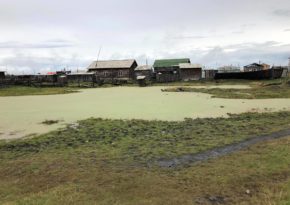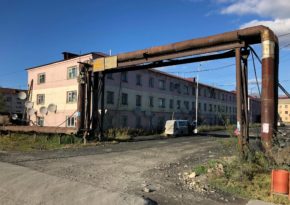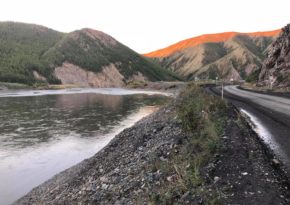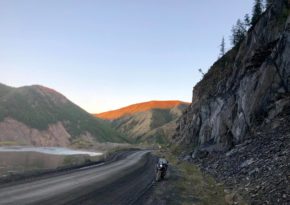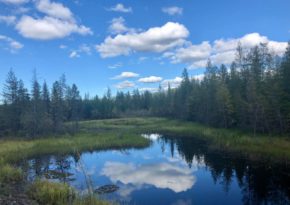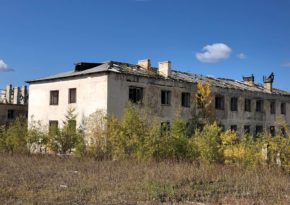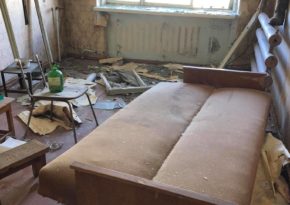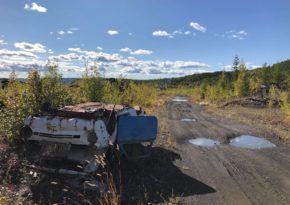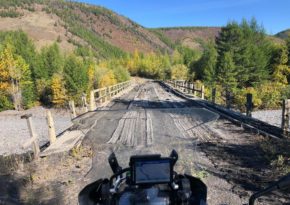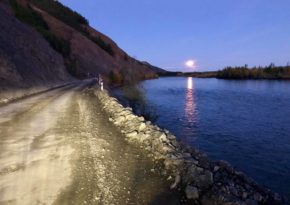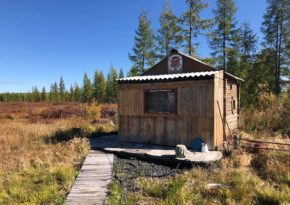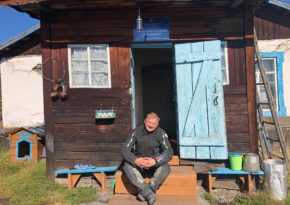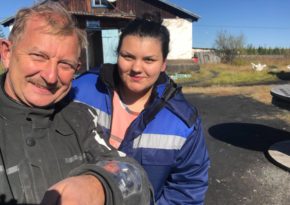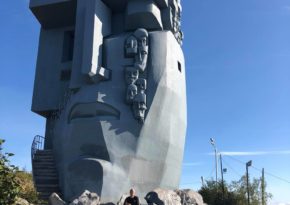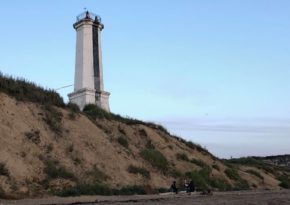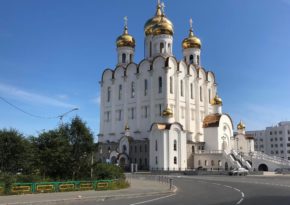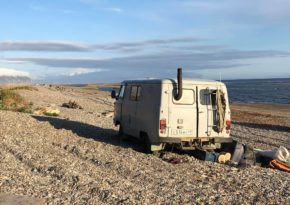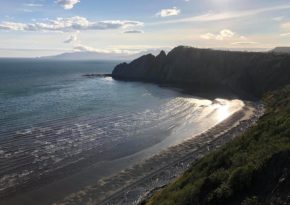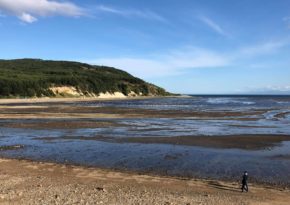Heading for Magadan: Kolyma
Heading for Magadan. Kolyma
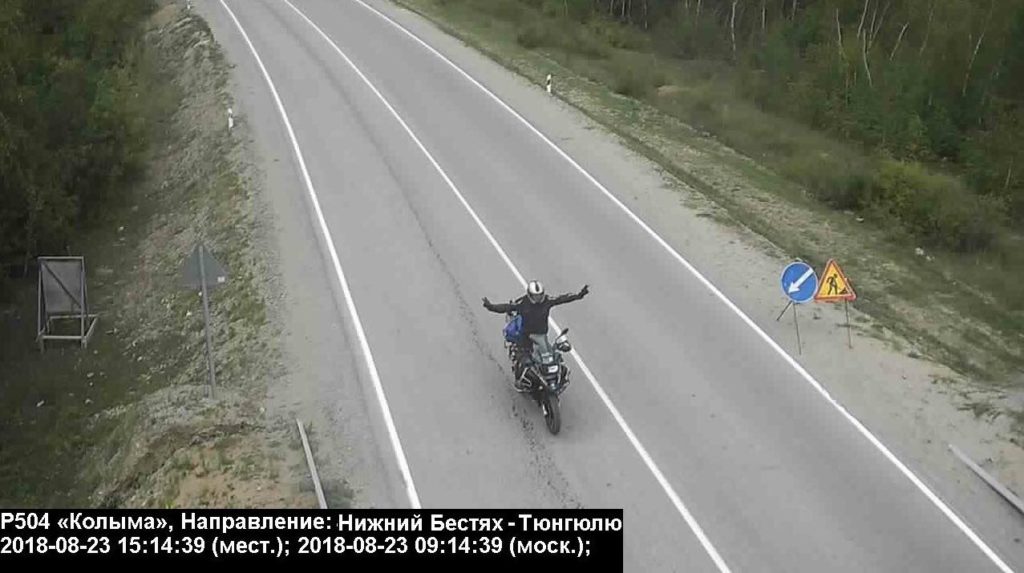
Two hundred kilometres from Churapchi there is the Aldan river. It is wide and full-flowing. I managed to catch the departing ferry. I paid three hundred roubles and in half an hour I was already on the opposite bank.
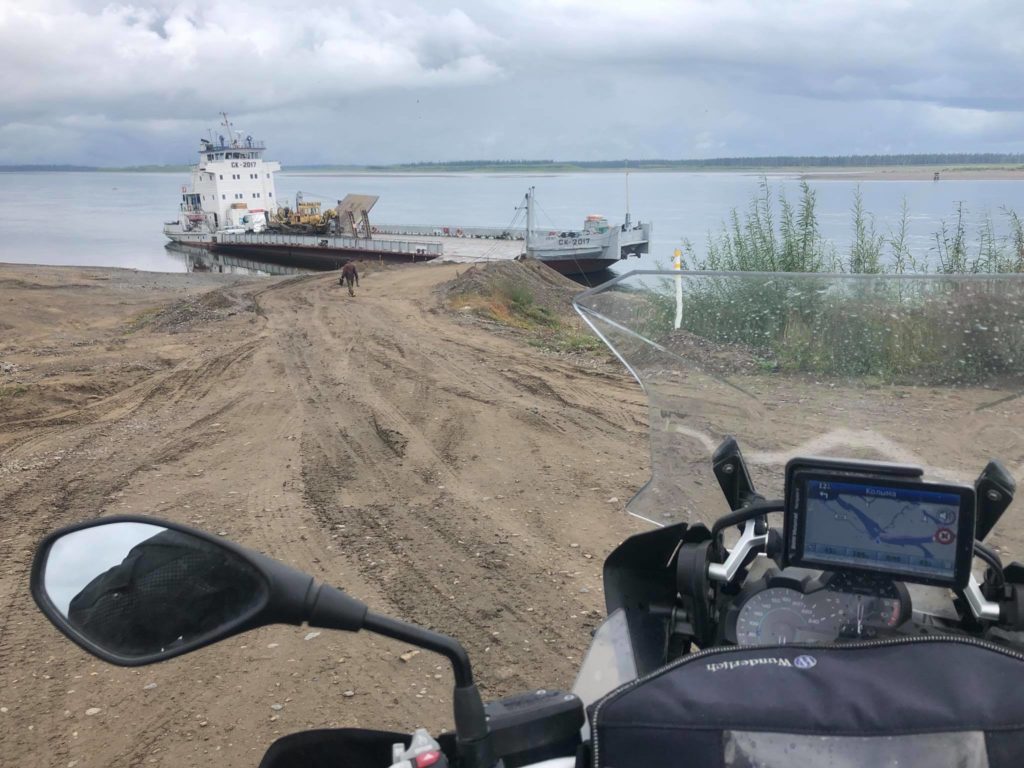
The road changed its colour, turned black. As a consequence, all the rubbish, which flew at me from under the wheels of trucks and other cars, was also black.
Khandyga is a settlement with asphalt roads, a petrol station and an uzbek canteen called "Asia", where we had a great lunch and met two Chinese people who speak English very badly. They were going to Magadan too in an old BMW 700.
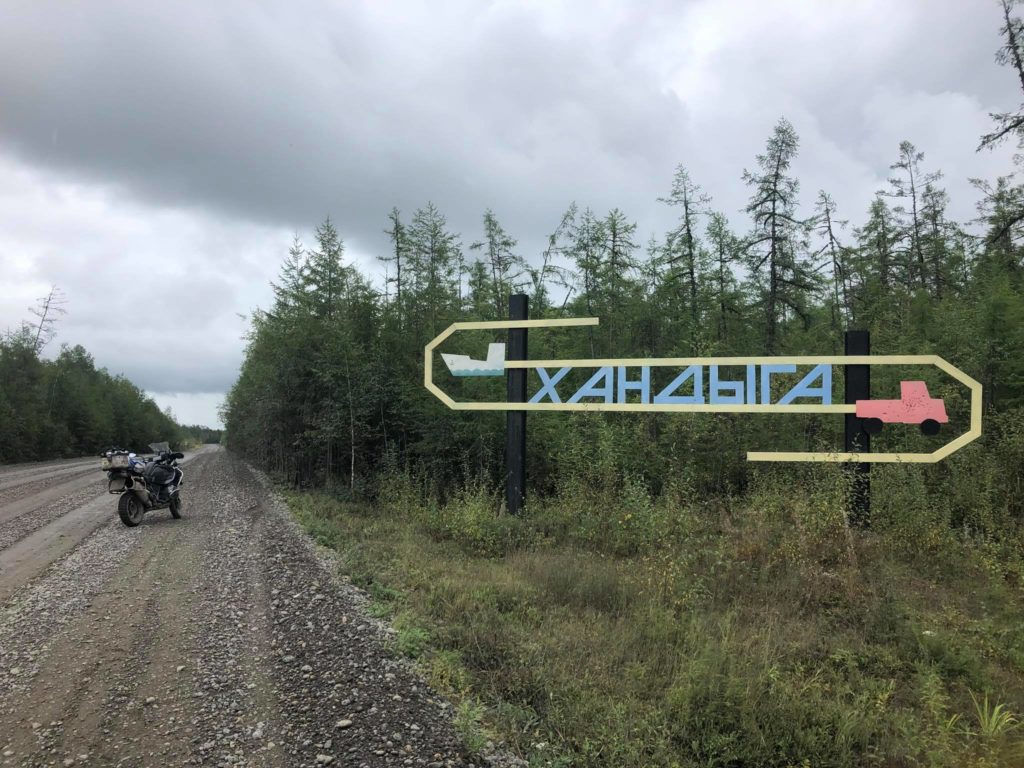
Having ridden 70 km from Khandyga, I refueled my motorbike with the gasoline number 92 in the village Teply Klyuch. And once again I experienced a broken grader road, endless black puddles and it rained on and on…
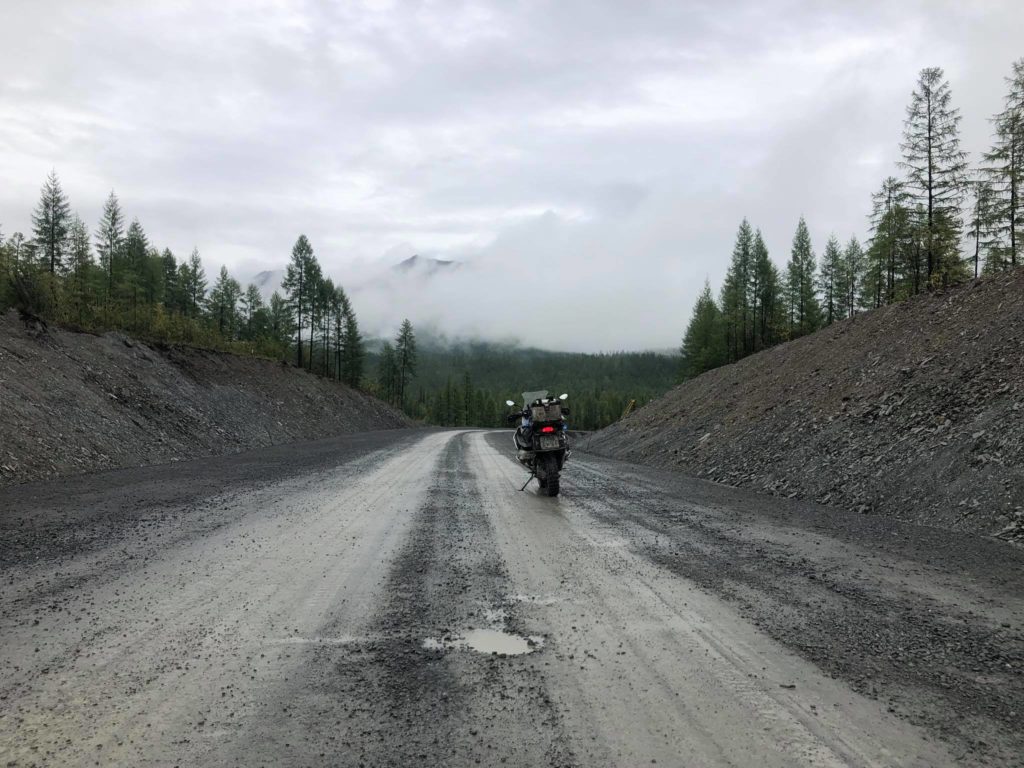
The road began to go up, looming around the black rocks, and we saw the peaks of the mountains. Some bridges over small but stormy rivers reminded me of BAM.
I rode another hundred kilometres and saw the road sign pointing to some kind of a settlement named Razvilka (literally "a fork in the road" from Russian). In fact, this was an abandoned base of road workers, where among some ruins, piles of scrap metal and carcasses of rusty machinery, I saw three men repairing some mechanism. I asked them a question about the condition of the further route and received a short but clear and disappointing answer. I said goodbye to them and went on to make sure of the truthfulness of their words.
Kolyma.
The damn middle of nowhere.
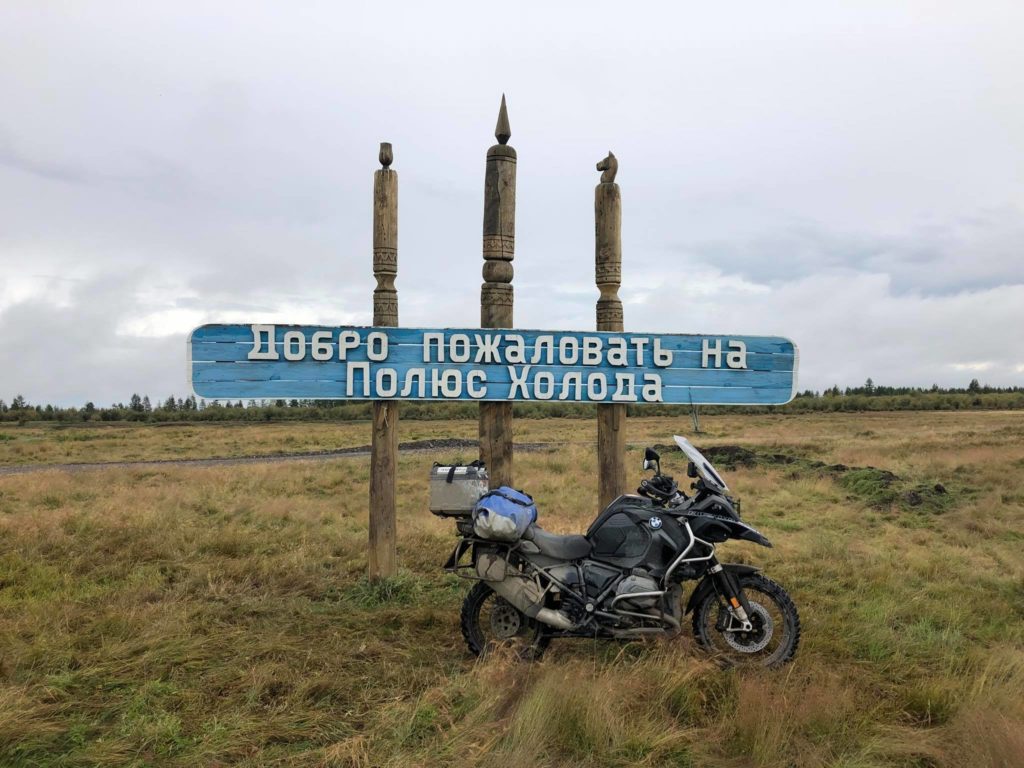
"Is it really very cold here in winter?"
"Yes, we had a cold winter. It was up to -65°C. And the winters before the latest one were rather warm. The temperature did not even drop to -60°C".
I had such a dialogue with the seller in a small (and only one) shop in the village Tomtor. This seller was an elderly woman, who had lived there since birth. Now we are heading for Oymyakon, a village that every student knows because it's the pole of cold, the coldest place in the northern hemisphere. It is located two hundred kilometres from the federal highway Kolyma. In order to get to it, you have to go along a broken, terrible road, which is periodically washed away by stormy rivers and blocked by mudslides that have descended.
About 500 people live in Oymyakon. They are mainly engaged in breeding horses and cows, hunting and fishing.
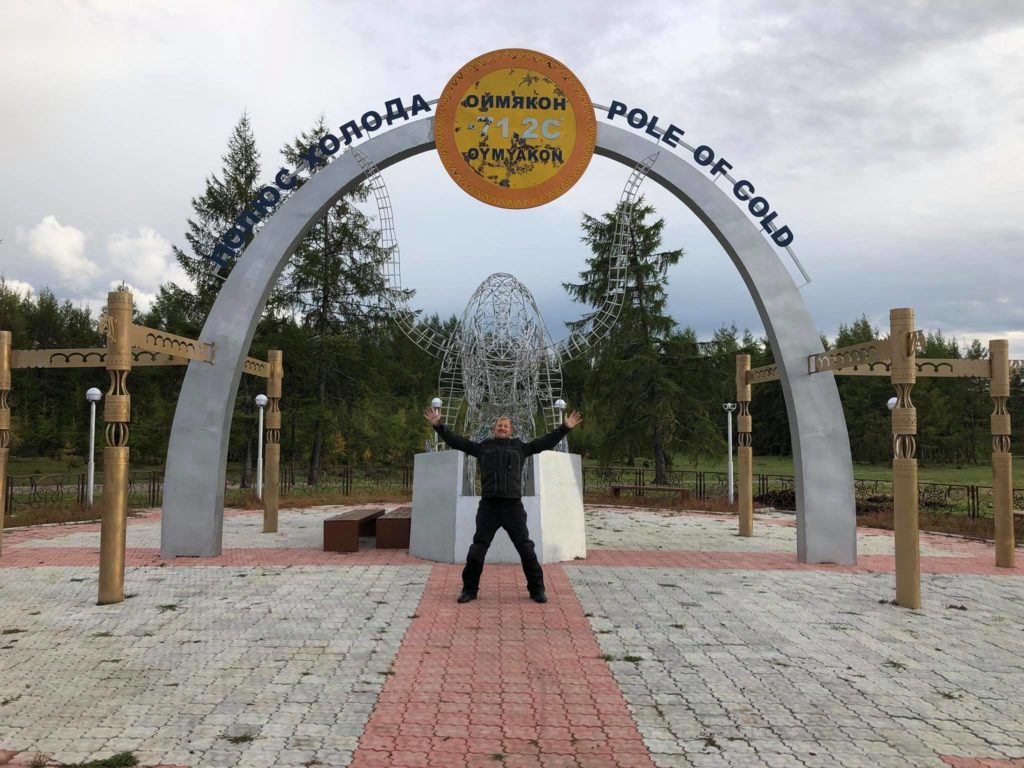
The village makes a depressing impression: there is lots of mud, huge puddles, destroyed buildings… It is located 500 km from the large village Ust-Nera (populated by 5000 people) and 1000 km from the administrative centre Yakutsk! And you can reach Oymyakon not by an asphalt road but only by a real off-road path. There are taiga forests, swamps and bears all around.
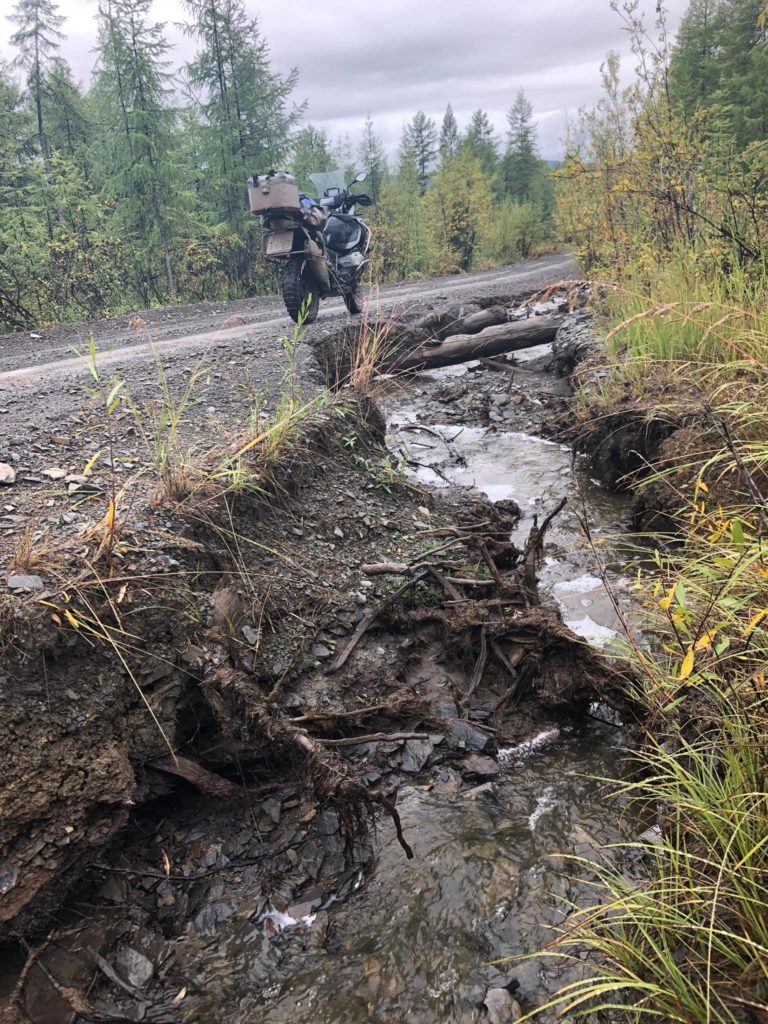
The damn middle of nowhere.
Heading for Magadan. Kolyma
There is one place on the Kolyma highway that everyone, who has walked along it at least once, knows.This is the famous petrol station number 26 near the settlement Kyubeme that has the unofficial name "Barrel". It is famous for the fact that this is the last petrol station on the way to Magadan, where you can refuel your vehicle for a relatively low price (52 roubles per litre of gasoline number 92 and 53 roubles per litre of diesel fuel). You will come across the next petrol station in the settlement Ust-Nera, which is 250 km away. And diesel fuel there will cost already 68 roubles per litre!

Having stopped in the middle of a muddy puddle at a decrepit gas station with a non-working S-meter, I took a fuel filler from a hook made of a rusty metal wire and inserted it into the tank. Then I came up to the metal barrel nearby, which was plastered from top to bottom with hundreds of stickers of motorbike travellers. I knocked on the dark little window. Something moved at the bottom and the wooden tray crawled somewhere inside, then someone's hand appeared in the window, grabbed my 2000 roubles bill and disappeared. "Number 92 up to the fuel tank!", I shouted into the window and went back.

I pushed the black button on the side of the petrol machine and waited. Something clicked inside it, hummed, and the iron box shook convulsively. The gasoline flew, but the curved pointer on the huge dial could only twitch in the same place, trying to count the litres poured into my tank but making no success.
Twenty metres from the petrol station there is an equally well-known café "Cuba", the last eating on the way, where you can have a good snack. Well, not even a snack, but a delicious meal. They have grayling fish and malma, homemade borscht, cabbage salad and a meat pie. That's literally every traveller's dream! Inside there are four wooden tables covered with oilcloth, benches near them, a TV-set and a washbasin. That's what the simple interior of the small café looks like.
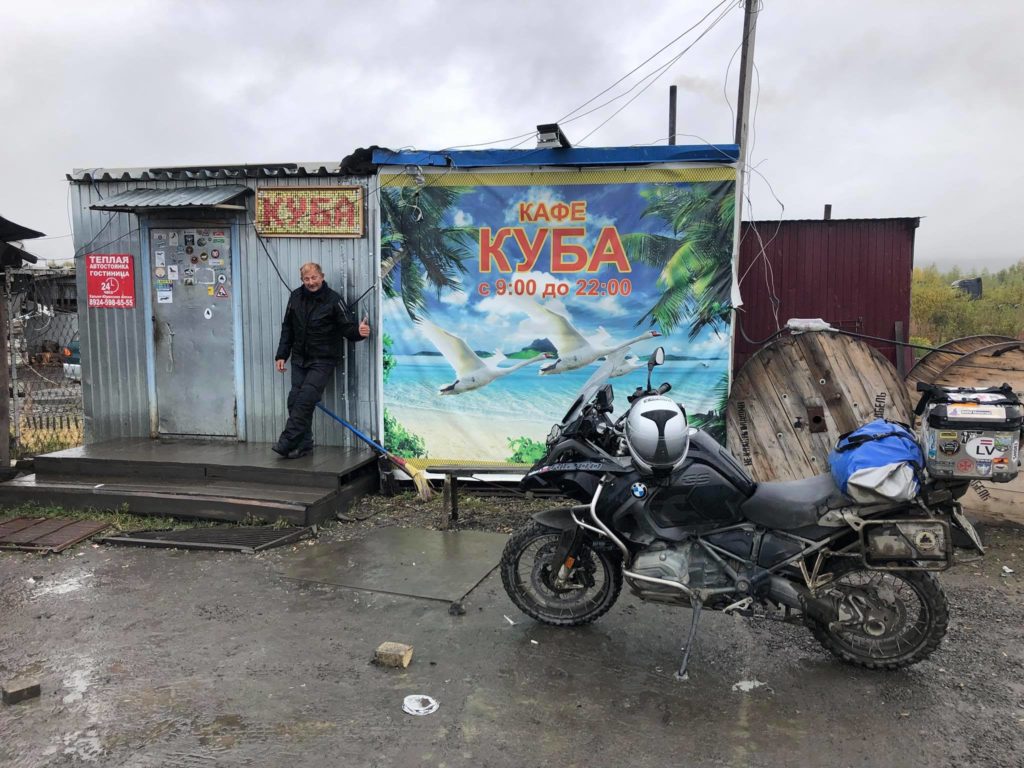
Having ridden a hundred kilometres from "Cuba", I saw the sun coming out, therefore, the nature around me became vivid. The road got drier, but then I followed the berm with large rubble, which was unlucky for the wheels.
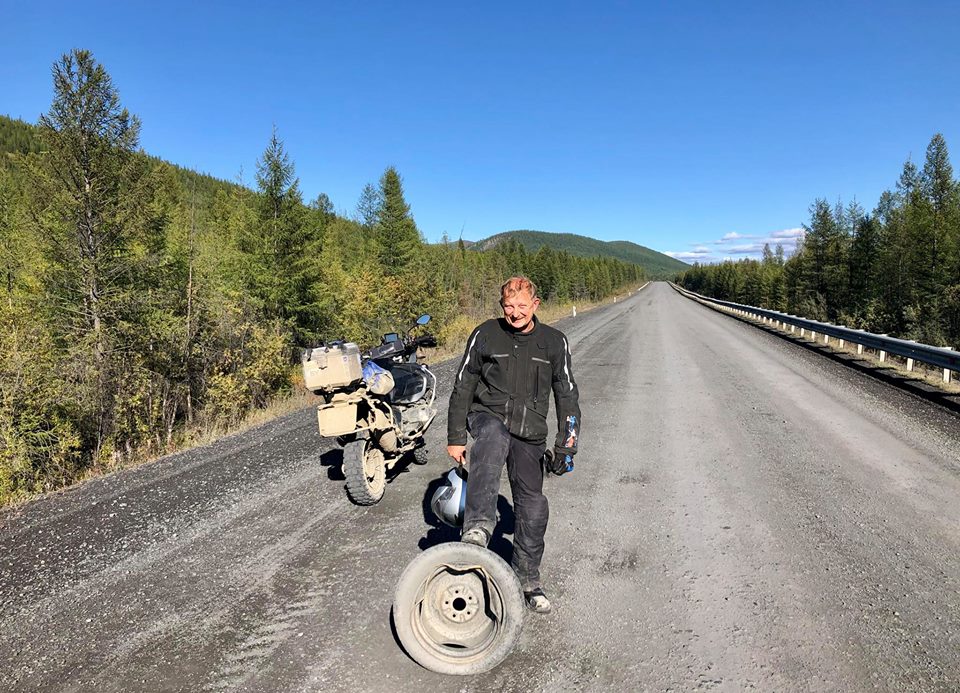
The large settlement Ust-Nera. Going along the central Lenin Street I saw mud and huge puddles, shabby houses, fallen fences. Everything was in shambles.
"What remarkable and interesting attractions can I see in your village?", I asked a few random passers-by.
"What? Here? Well, nothing", everyone gave the same answer.
I had a simple snack in the uzbek canteen and refueled my motorbike with noticeably more expensive gasoline. Then we went further towards Susuman. The nature of Kolyma is just awesome! There are plush mountains, rocks, full-flowing mountain rivers, lakes and diverse vegetation. Everything is incredible and really beautiful!
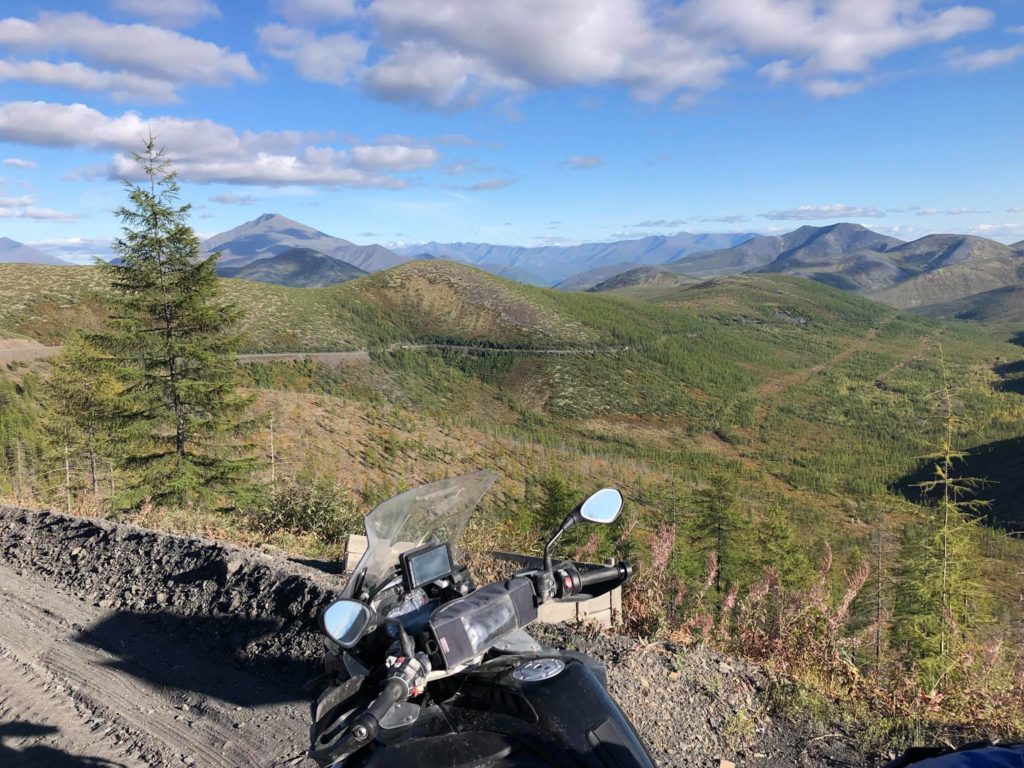
There's only one thing that spoils the landscape: the huge slag heaps. There are a lot of gold mining enterprises in these places and it seems that they have dug through all the big and small rivers and everything around in search of this metal. There are six such artels in Ust-Nera and many more of them all over Kolyma!
There is a local "Chernobyl" on the Kolyma highway 730 km before Magadan. This is the abandoned city named Kadykchan, a ghost town. 20 years ago everything was there just like in any other ordinary city: neighborhoods, hospitals, restaurants, schools and kindergartens. People worked in coal mines and had a good salary.
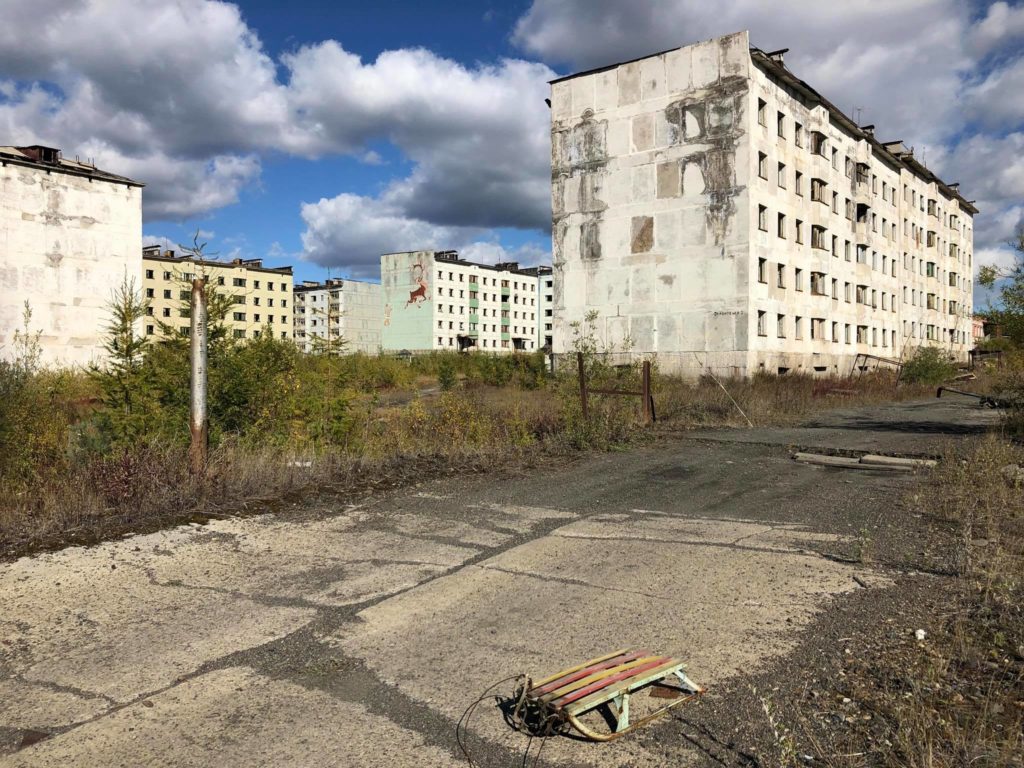
But in September 1996 everything suddenly changed because of the explosion at the main mine, when 6 miners perished. The mine was closed, therefore several thousand people were left without work and any livelihood. In January 1997 the air tempreture was -40°C and there happened an accident at the only thermal power plant, after which living in the town was no more impossible. Thousands of people, all the families had to evacuate and leave their property.

I slowly rode along the overgrown streets and stopped at the entrance of one of the five-storey buildings, then I went inside the house. There I saw broken windows, doors that had been torn off their hinges, broken furniture and children's toys on the floor! That was a terrible sight!
Well, frankly speaking, on Kolyma every village looks a bit like Kadykchan. ;(
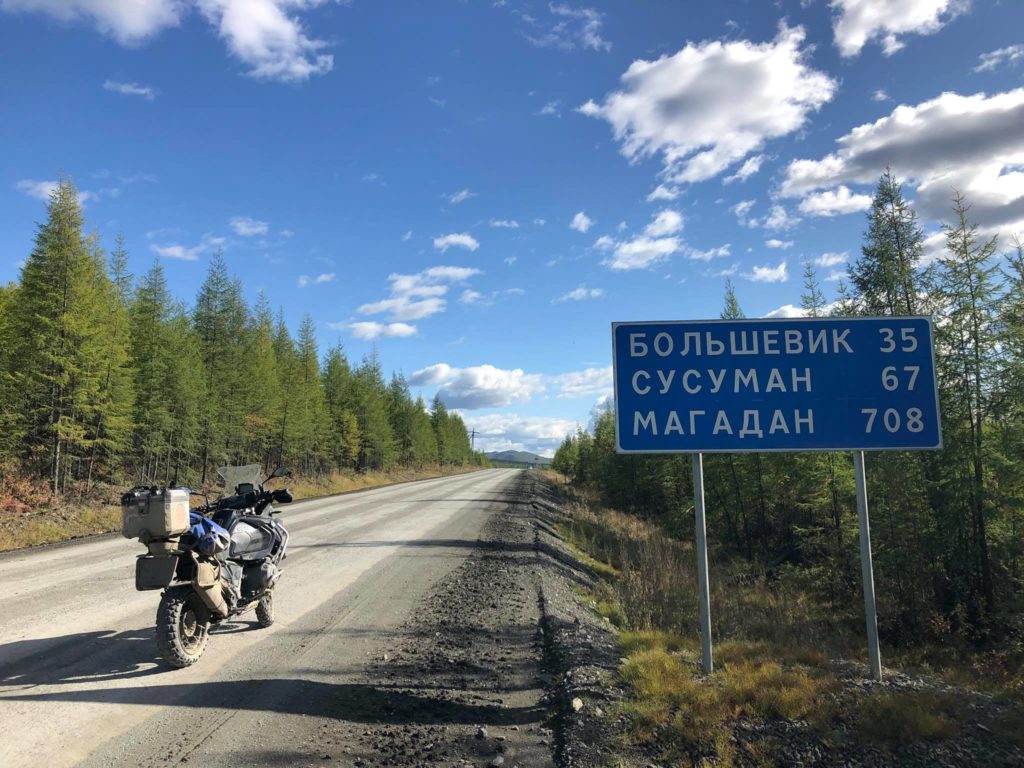
The Kolyma highway is like a filmstrip, which wounds on the wheels of a motorbike, rustling with pieces of rubble.It leaves its trace not only in the memory but also in the soul of everyone who has ever gone along it. This is an outstanding road. You won't find any like that in the whole world. It is unique first for its history (which we still know only a little), then for the incredibly beautiful nature and wonderful people. There is a lot of gold in this area and the huge grey slag heaps of the processed rocks constantly remind you of this fact. But, undoubtedly, the real gold of this region is the people.

Have you ever greeted all the drivers of trucks that you meet? Did they answer you with a wave of their hand and a signal? Where is such a situation possible? Only on Kolyma.
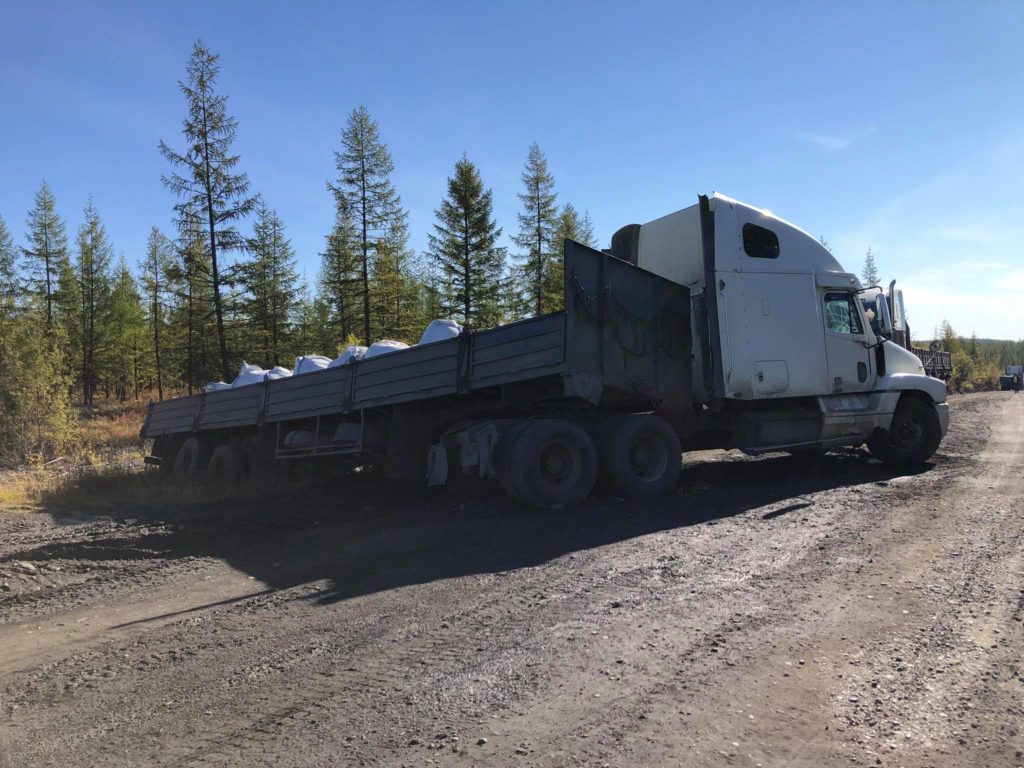
And any car will stop if you hitchhike. However, there are not so many of them on the road. :) There are sections, where you will meet 2 or 3 cars, having gone a hundred kilometres. Large trucks or fuel trucks usually go in pairs. The thing is, it's a long way: anything can happen and there is practically no communication link here. There is nothing at all except for the taiga and bears.
Drivers, road workers and gold miners may seem rude and harsh at first sight, but that's fair enough (I can hardly imagine a character like Sergei Zverev, who boards a Kamaz wheel with a sledgehammer on the pass). Kolyma will not accept a weak-minded person. He just will not be able to survive there.
On the border between Yakutia and the Magadan region I saw a small house not far from the road. I turned to it, the dogs barked and a young girl came out to meet me. It turned out to be a weather forecast station, consisting of a house, a bathhouse, two dogs and a cat.
And the boss's name was Sergey. This man was about 45 years old. They live and work here in the taiga, isolated from the people many kilometres around (and from the civilization a thousand kilometres so far). There is no Internet connection. The phones don't work. They take the results of the indicators every three hours and send them to the centre via a Morse code transmitter. We talked about life, then Sergey invited us into the house and treated us to tea and cookies. They were very interesting people!
And for the first time in my entire journey along Kolyma, in a 600 km distance from Magadan, a traffic police inspector stopped me! Actually, not in order to check my documents, but just to communicate on some topic.
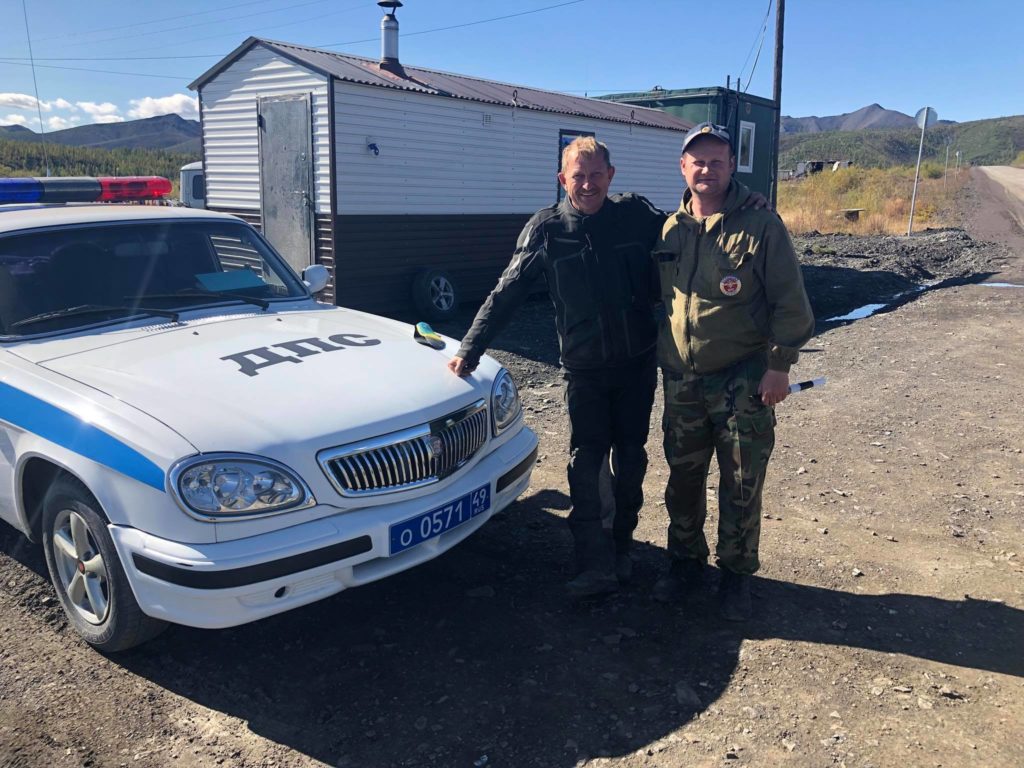
And he also advised me to visit an amazing person who lives in the outskirts of the semi-abandoned village Ust-Khakchan. Let me tell you this story.

"So I tilt the barrel and you hold the bucket. Hold it closer, with both hands! Oh, the Muscovites are so inept, damn it!"
"But I'm not a Muscovite!"
"And what's the difference? You're not helping anyway!", that's how Valery Vasilyevich (a local and almost the only inhabitant of the abandoned village Ust-Khakchan, which is 700 kilometers from Magadan along the Kolyma highway) described me and the Moscow residents so categorically and succinctly.
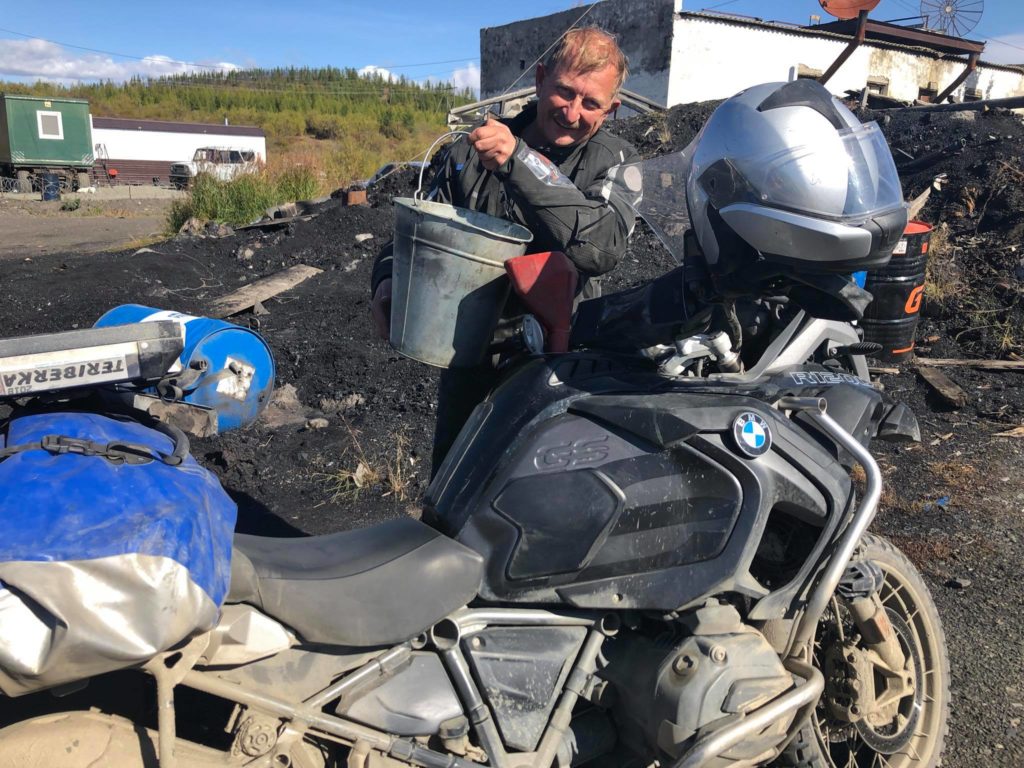
And I was recommended to visit him by that traffic police officer, with whom I had spoken before.
"You should visit this old man, you will not regret it! And he will refuel your motorbike. But don't offer money to him, he won't take it. And then you will have two hundred kilometres left to the nearest petrol station.
Valery Vasilyevich indeed fueled me with a full tank of expensive and deficit gasoline in this region. He also treated me to a cup of tea with pies and strictly rejected money. "I don't take money from travelers", his answer was.
In general, he turned out to be an amazing person! For twenty years he had been living somewhere in the taiga at the edge of the world, which he calls home. Well, see it yourself here…

Hello, Magadan!
I've been riding to you for a month!
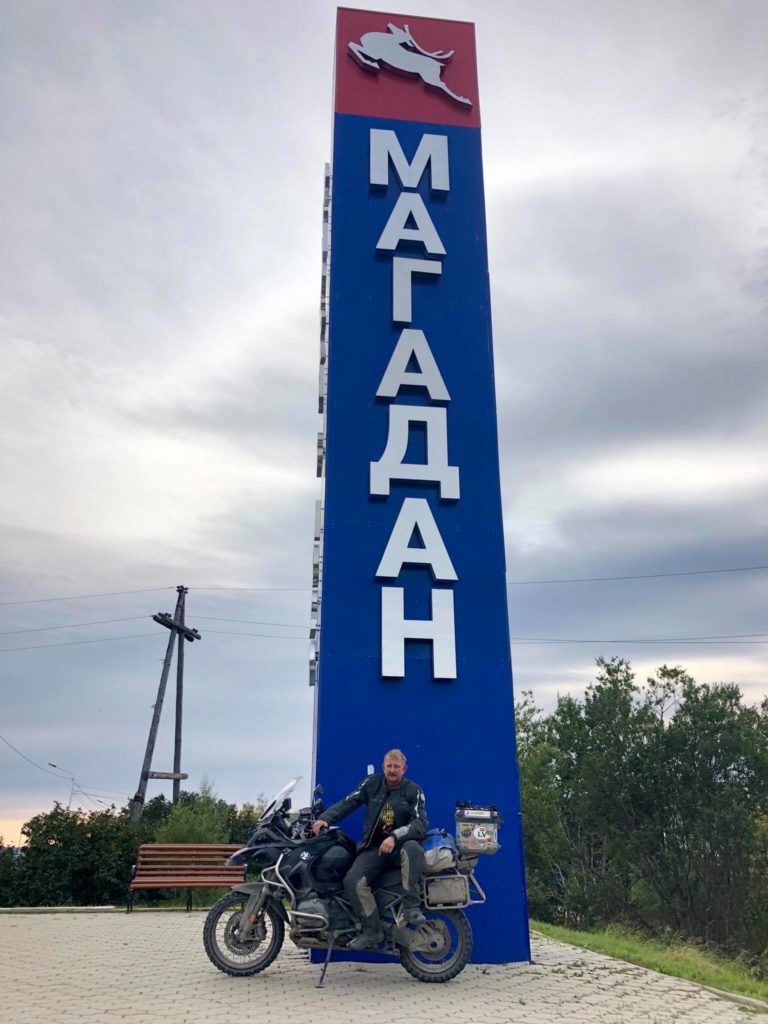
Now there are eight time zones and 12,000 km behind (more than 4,000 of them were passed along the roads without asphalt or any pavement). I've overcome BAM with its rivers, fords, destroyed bridges and railway berms. I've been through the complicated, unpredictable and amazing Kolyma highway. The whole of Russia is behind us. There is no way further.
Magadan is rather a small port city with a population of less than 100.000 people. It is compactly located on the isthmus between two bays and has access to the Sea of Okhotsk.

It was founded in 1929 with the aim of cultivating the richest natural resources of the Kolyma Region. Magadan is famous first for its historical background, which can be characterized as dark and tragic to some extent. The monument "The Mask of Sorrow" by Ernst Neizvestny reminds of this fact right at the entrance to the city.
In general, I liked Magadan! What's more, we were helped to explore and understand this city by a very interesting person, a local historian, whose name was Eugene.
If you go up the high hill of Nagaev Bay (which is not that easy), then you'll see the city, the bay and the sea sight from a bird's-eye view. You immediately realize that you have reached the edge of the world. And recently I could only dream about it!

That's why the invitation "Come to us on Kolyma!" will never make me grin in a sarcastic way. My answer will sound unexpected: "Of course I will come! With great pleasure!"
Video
Часть 3.1 - Колыма
Часть 3.2 - Колыма
 Cap-travel.ru
Cap-travel.ru